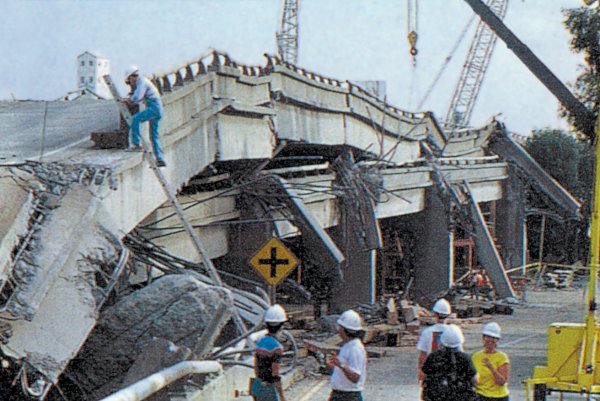Buried Rupture Earthquake on:
[Wikipedia]
[Google]
[Amazon]
 In seismology, a buried rupture earthquake, or blind earthquake, is an earthquake which does not produce a visible offset in the ground along the fault (as opposed to a
In seismology, a buried rupture earthquake, or blind earthquake, is an earthquake which does not produce a visible offset in the ground along the fault (as opposed to a 
Differences in ground motion and fault rupture process between the surface and buried rupture earthquakes
Seismology Geological hazards {{geology-stub
 In seismology, a buried rupture earthquake, or blind earthquake, is an earthquake which does not produce a visible offset in the ground along the fault (as opposed to a
In seismology, a buried rupture earthquake, or blind earthquake, is an earthquake which does not produce a visible offset in the ground along the fault (as opposed to a surface rupture earthquake
In seismology, surface rupture (or ground rupture, or ground displacement) is the visible offset of the ground surface when an earthquake rupture along a fault affects the Earth's surface. Surface rupture is opposed by buried rupture, where the ...
, which does). When the fault in question is a thrust fault, the earthquake is known as a blind thrust earthquake
A blind thrust earthquake occurs along a thrust fault that does not show signs on the Earth's surface, hence the designation "blind". Such faults, being invisible at the surface, have not been mapped by standard surface geological mapping. Sometim ...
.

Ground motion
Recorded ground motions of large surface-rupture earthquakes are weaker than the ground motions from buried rupture earthquakes.Depth
The asperity for a buried rupture earthquakes is in area deeper than roughly . Examples are theLoma Prieta earthquake
The 1989 Loma Prieta earthquake occurred on California's Central Coast on October 17 at local time. The shock was centered in The Forest of Nisene Marks State Park in Santa Cruz County, approximately northeast of Santa Cruz on a section of t ...
, Northridge earthquake
The 1994 Northridge earthquake was a moment 6.7 (), blind thrust earthquake that occurred on January 17, 1994, at 4:30:55 a.m. PST in the San Fernando Valley region of the City of Los Angeles.
The quake had a duration of approximately ...
, and the Noto Hanto earthquake
The occurred on March 25, 2007, in the Hokuriku region of Japan.
Overview
At 9:41:58 a.m. on March 25, 2007, a magnitude 6.9 earthquake struck the Hokuriku region of Japan, near the Noto Peninsula. The earthquake shook the city of Wajim ...
.
Tsunamis
As compared to the seabed surface rupture case, uplifted water outside the fault plane in buried rupture earthquakes makes for largetsunami waves
A tsunami ( ; from ja, 津波, lit=harbour wave, ) is a series of waves in a water body caused by the displacement of a large volume of water, generally in an ocean or a large lake. Earthquakes, volcanic eruptions and other underwater explo ...
.
See also
* Aseismic creepReferences
External links
*Differences in ground motion and fault rupture process between the surface and buried rupture earthquakes
Seismology Geological hazards {{geology-stub